What Are You Looking For?
What Are You Looking For?


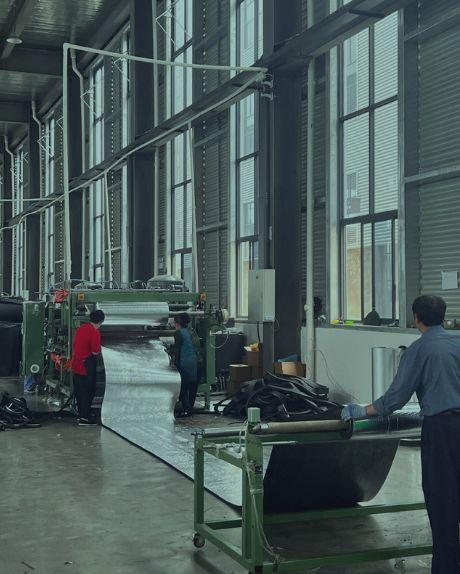
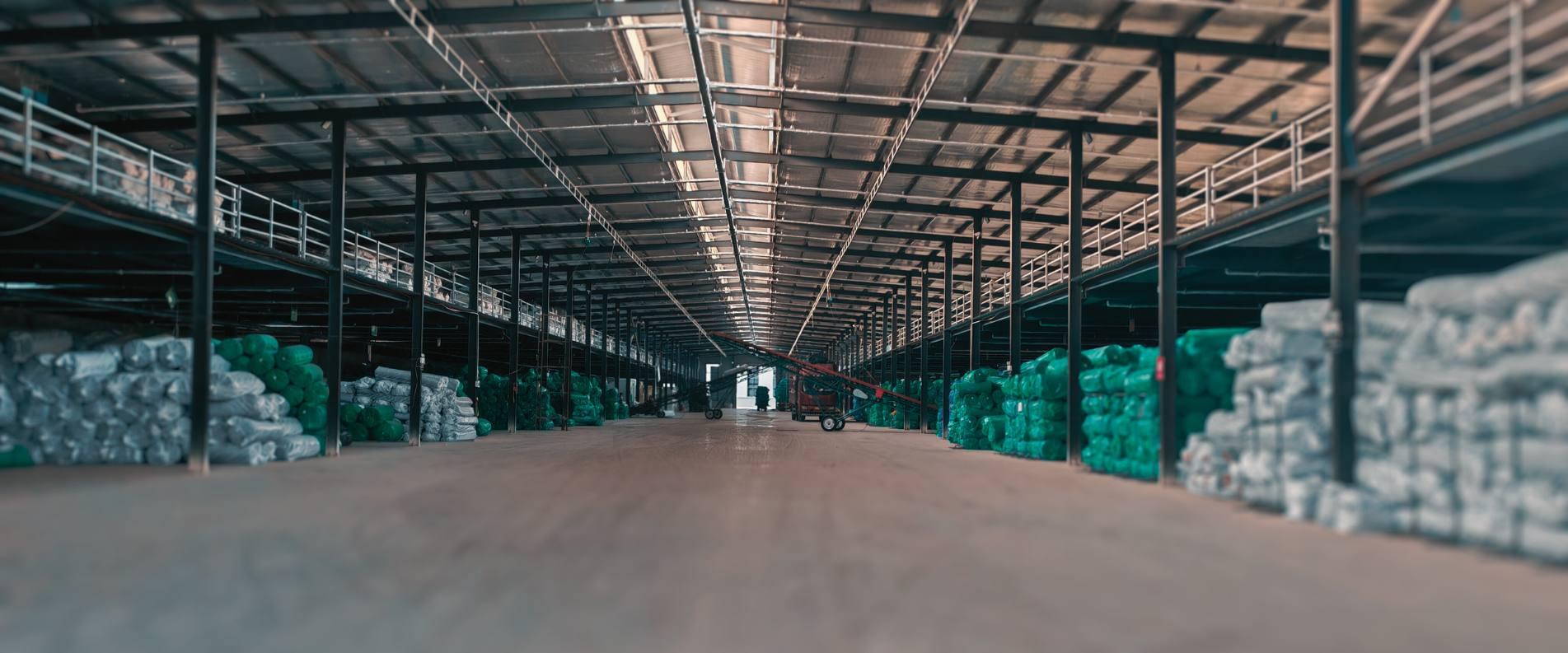
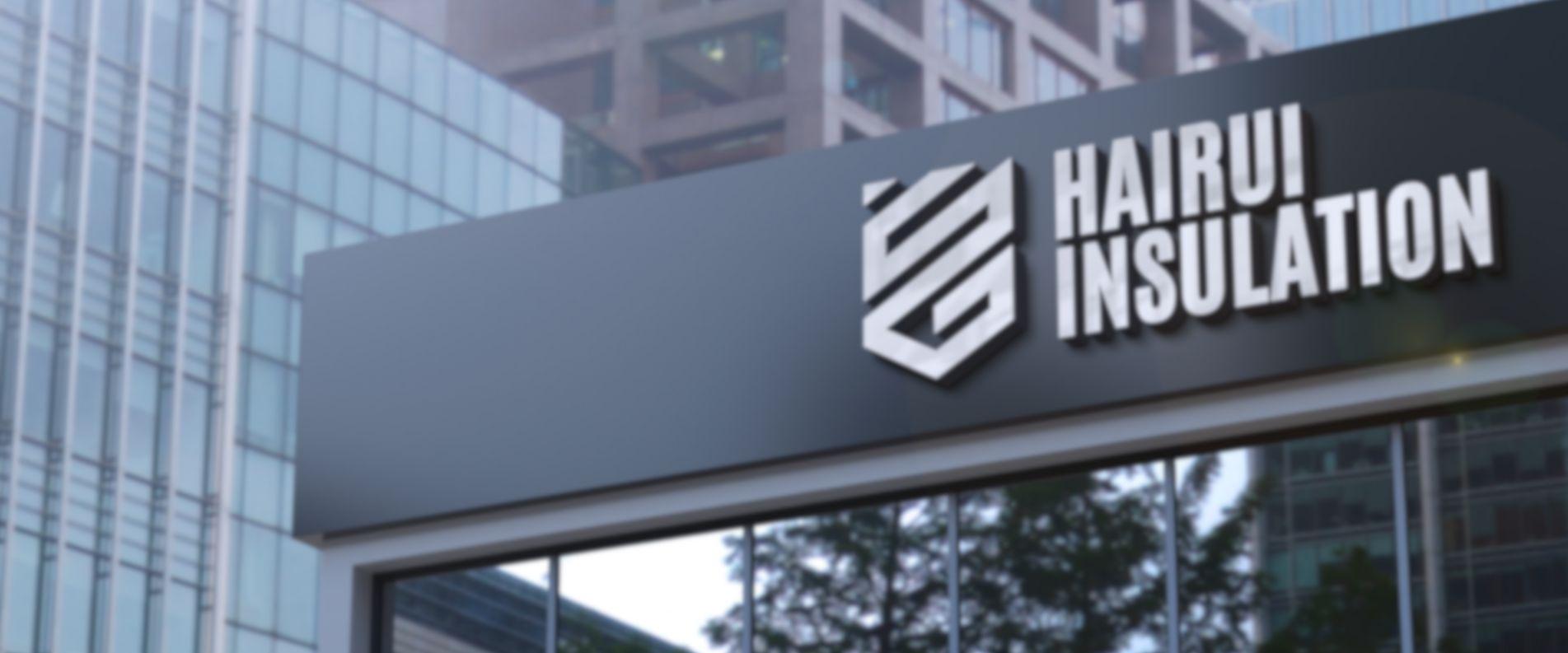
This versatile closed-cell insulation foam offers excellent thermal performance, idea for industrial piping and chilled water pipes.
Read MoreDesigned with a foil backing, this elastomeric foam insulation comes with extra protection to minimizes heat transfer and condensation, ensuring long-term energy efficiency for industrial applications.
Read MoreThis versatile elastomeric foam insulation comes with strong adhesive backing, providing fiber-free and non-particulating thermal resistance and moisture control.
Read MoreOur high-performance elastomeric rubber insulation ensures optimal energy efficiency and moisture control, perfect for duct work and plumbing applications.
Read MoreThis flexible closed-cell elastomeric rubber insulation offers reliable protection from condensation and energy loss, perfect for underfloor heating pipe insulation as it ensures no heat exchange with ambient conditions.
Read MoreThis flexible pre-slit, foil-backed closed-cell insulation tube provides easy installation, outstanding energy efficiency, and is fiber-free and non-particulating, perfect for industrial piping.
Read MoreThis speciality closed-cell elastomeric rubber insulation offers a very high density from 80 to 100 kg/m³, perfect for insulation in extreme enviroments and conditions.
Read MoreThis flexible closed-cell elastomeric rubber insulation offers reliable protection from condensation and energy loss, perfect for refrigerant line insulation as it ensures no heat exchange with ambient conditions.
Read MoreOur high-quality milky-white colored foam rubber tubing ensures no heat exchange with ambient conditions, ideal for industrial piping and refrigeration systems.
Read MoreOur soundproof tiles, crafted with flexible closed-cell elastomeric rubber insulation, deliver outstanding noise reduction, perfect for residential and commercial applications.
Read MoreThese flexible closed-cell elastomeric rubber acoustic wall panels come with self-adhesive backing, are designed for superior soundproofing, ensuring a peaceful and quiet atmosphere in any space.
Read MoreOur soundproof foam rolls feature flexible closed-cell elastomeric rubber insulation, offering reliable noise control and enhancing acoustic quality in any environment.
Read MoreOur soundproof foam rolls, made with flexible closed-cell elastomeric rubber insulation, and comes with self-adhesive backing, ensure effective noise reduction, ideal for creating serene and comfortable living spaces.
Read MoreGalvanized Steel Insulation Fixing Pins are engineered for secure and efficient insulation installation. Constructed of durable material resistant to corrosion, these fixing pins ensure long-term performance in various insulation materials.
Read MorePlastic Insulation Anchor Fasteners are specifically designed for safe and efficient insulation installation. Perfect for projects seeking long-term solutions that are reliable and durable.
Read MoreHigh-grade aluminum sheet roll pipe jacketing designed specifically to cover insulation pipes provide long-term protection. Durable and corrosion resistant, they're an ideal fit for industrial settings. Simple installation and maintenance make for lasting peace of mind.
Read MoreReinforce Aluminium Foil Insulation Tape was specifically created to offer superior insulation and durability for use across a range of applications, providing both thermal insulation and moisture resistance. Easy to apply and long-term performance are hallmarks of quality.
Read More



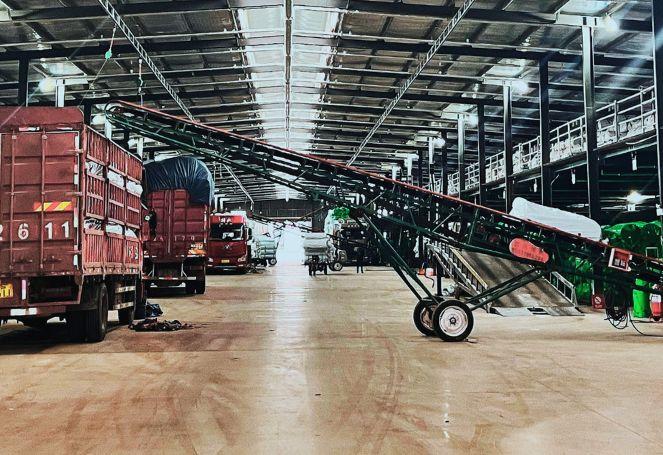

Units of insulation shipped out

Satisfied customers since 2006

Of our 300+ employees are women

Customers return for repeat business

We understand how difficult it can be to find the right supplier in a crowded Chinese market. This is why we see it as our job here at Hairui—to make things easier for you. From your first inquiry to post-purchase support, our team is dedicated to providing you with outstanding service at all times.
Table of Contents The Whole Economics of Insulation The Power of Proper Insulation The "Economic Thickness" Sweet Spot Prioritize Safety Alongside Energy Savings "The true cost of insulation goes far beyond the upfront investment. To make the best decision, we need to look at the long-term economic impact over the life cycle of the insulation system." - Whole Building Design Guide (WBDG) Insulation is often an overlooked component of energy efficiency, but its true value extends well beyond the initial price tag. As a business dealing with insulations, have you ever wondered about the hidden costs and potential savings associated with your insulation systems? Prepare to be amazed! Uncover the Whole Economics of Insulation When selecting insulation materials, it's crucial to consider the "whole economics" - not just heat loss and thickness, but the comprehensive impact on your capital and operational costs. Key factors include: Initial Costs: The purchase price and installation expenses of insulation materials. Operational Costs: Ongoing energy consumption, maintenance, and potential repairs. End-of-Life Costs: Disposal or recycling expenses of the insulation material. By analyzing these components, you can ensure your insulation systems are not only energy-efficient but also cost-effective in the long run. Luckily, the WBDG provides an online calculator to help you evaluate the life cycle costs of insulation, making it a breeze to assess your options. Witness the Power of Proper Insulation The economic benefits of well-designed insulation are nothing short of astounding. Consider this real-world example: A 100-meter length of bare 2-inch steam pipe operating at 100°C could waste a staggering 3,500 gallons of oil annually, costing around US$5,000. But by applying just 1.5-inch thick elastomeric foam insulation, the annual cost plummets to a mere $500 - a preventable cost of US$4,500 each year! And at 200°C, the same pipe could waste 10,000 gallons of oil per year if left uninsulated, but with 2-inch insulation, the annual cost drops to around 800 gallons, saving a remarkable US$13,800 annually. Unlock the "Economic Thickness" Sweet Spot The concept of "economic thickness" is a game-changer when it comes to insulation selection. This refers to the optimal insulation thickness where the total cost of insulation and heat loss is minimized over time. As insulation thickness increases, the cost of insulation rises, while heat loss costs decrease. The goal is to find the "economic thickness" - the sweet spot where the total cost is at its lowest. The Powerful Tools for Life Cycle Cost Analysis Evaluating life cycle costs doesn't have to be a daunting task. Fortunately, there are user-friendly online tools and calculators available to assist you, such as: Thermal Insulation Calculator from the Whole Building Design Guide (WBDG) Building Life-Cycle Cost (BLCC) Programs from the U.S. Department of Energy (DOE) These resources empower you to assess the economic impact of insulation investments, considering factors like heat loss, energy savings, payback periods, and net present value. Prioritize Safety Alongside Energy Savings While energy savings are paramount, safety must also be a top priority when selecting insulation. As the National Association of Corrosion Engineers (NACE) recommends, "the level of insulation may need to be adjusted to ensure worker safety and process requirements." The thickness of insulation should ensure that surface temperatures do not pose risks to personnel, so the optimal insulation level may need to be adjusted based on safety considerations, not just economic grounds. Source Your Insulation from Hairui As a leading manufacturer of high-quality closed-cell elastomeric foam insulation, Hairui is your trusted Chinese partner in optimizing energy efficiency and performance. Our insulation solutions are designed to retard heat gain, prevent condensation, minimize sound transmission, reduce vibration, and create a reliable seal against air, water, and dust - elevating your operations to new heights. Explore our diverse range of insulation materials, including closed-cell polyethylene foam, rubber, NBR and EPDM. And with our customization capabilities, from die-cutting and flash-cutting to spooling and precision-cut tapes, we'll tailor the perfect insulation solution for your unique needs. Ready to unlock the hidden savings in your insulation investments? Contact Hairui today to discuss how our expertise can transform your facility's energy efficiency and performance. Get a Free Consultation with Our Insulation Experts and Save on Insulations Now.
Table of Contents Importance of Insulation in HVAC Systems Key Insulation Materials and Properties Advanced Manufacturing Techniques Addressing HVACR Manufacturer Challenges Economic Considerations Best Practices for HVAC Insulation Conclusion In the HVAC industry's pursuit of energy efficiency, sustainability, and cost-effectiveness, insulation emerges as a crucial component. In the HVAC industry's pursuit of energy efficiency, sustainability, and cost-effectiveness, insulation emerges as a crucial component. This article examines the technical aspects of insulation in HVAC systems, particularly in fan coil units, and explores advanced manufacturing techniques and solutions to common challenges. Importance of Insulation in HVAC Systems Insulation plays a vital role in HVAC and refrigeration systems, primarily for condensation and temperature control. When equipment operates below ambient air temperature, moisture can condense or freeze on cold surfaces, leading to corrosion and reduced efficiency. Key Insulation Materials and Properties Common insulation materials for HVAC systems include: Fiberglass Polyurethane Elastomeric foam rubber Critical properties for selection: Water vapor transmission rate (WVTR) Thermal conductivity Fire retardancy Comparative chart focusing on Fiberglass, Polyurethane, and Elastomeric Foam Rubber insulation materials Material WVTR (Perms) Thermal Conductivity (Btu/hr-ft-°F) Fire Retardancy Rating Fiberglass 0.5 - 1.0 0.25 - 0.35 Class A (self-extinguishing) Polyurethane 0.1 - 0.2 0.20 - 0.25 Class B Elastomeric Foam Rubber 0.03 - 0.05 0.19 - 0.24 Class A Advanced Manufacturing Techniques Extrusion Process Optimization: Continuous Vulcanization: Microwave technology ensures uniform curing. In-line Quality Control: Laser measurement systems monitor insulation thickness in real-time. Automated Cutting and Fitting: CNC Cutting Systems: Computer-controlled cutting for precise sizing. 3D Scanning Technology: Digital modeling for perfect-fit insulation designs. Addressing HVACR Manufacturer Challenges Condensation Risks Solution: Multi-layer insulation systems Inner layer: Closed-cell elastomeric rubber (≤0.08 perm-inch water vapor permeability) Outer layer: Vapor barrier film (<0.02 perms permeance rating) Thermal Bridging Solution: Custom-molded elastomeric components Specific designs for valves, fittings, and transitions Thermal imaging quality control Manufacturing Efficiency Solution: Pre-fabricated insulation systems Modular, pre-insulated components Just-in-time manufacturing principles Regulatory Compliance Solution: Advanced insulation materials Ultra-low thermal conductivity (λ ≤ 0.033 W/mK at 0°C) Phase-change materials (PCMs) for peak load performance Economic Considerations The concept of "economic thickness" is crucial in insulation selection. It represents the insulation thickness that minimizes the combined cost of heat loss and installed insulation. Factors to consider: Initial installation cost Long-term energy savings Operational efficiency Fuel costs Insulation performance Thermal efficiencies As we discussed in the previous article, which provided a detailed examination of "insulation economics," the optimal insulation level may need to be adjusted based on safety considerations, not just economic grounds. Best Practices for HVAC Insulation Comprehensive coverage: Insulate pipes, valves, and fittings. Eliminate open joints and ensure overlapping layers. Consider insulation support structures during design. Implement lean manufacturing principles: Value Stream Mapping 5S Methodology Use advanced adhesive systems: Rapid-cure adhesives (<60 second set times) Precision application systems (e.g., robotic sprayers) Employ rigorous quality assurance: 100% thermal imaging inspection Automated pressure testing systems Conclusion The strategic selection and application of insulation materials significantly impact the efficiency and longevity of HVAC equipment. By leveraging advanced manufacturing techniques, addressing key challenges, and embracing technical innovations, HVAC manufacturers can optimize their products' performance and maintain a competitive edge in the evolving industry landscape. As the industry progresses, the role of insulation in driving efficiency, sustainability, and cost-effectiveness will become increasingly vital. Understanding and implementing these technical and economic considerations will be crucial for manufacturers aiming to deliver high-performance, energy-efficient, and environmentally responsible HVAC solutions. Source Your HVAC/R Insulation from Hairui As a leading manufacturer of high-performance closed-cell elastomeric foam insulation, Hairui directly addresses the key HVAC challenges discussed in this article. Our advanced solutions, leveraging rubber-making techniques and raw materials, optimize energy efficiency, prevent condensation, and enhance overall system performance, making us your ideal partner in elevating HVAC technology. Ready to optimize your HVAC systems with advanced insulation technology? Contact Hairui today to explore how our multi-layer systems and custom-molded components can enhance your products' efficiency and compliance. Get a Free Consultation with Our HVAC Insulation Experts and Elevate Your Manufacturing Process Now.
Table of Contents Introductory Understand the project requirements Evaluate installation considerations Focus on environmental and health impacts Seek professional Advice The right selection of insulation materials can benefit you in three dimensions: Improved energy efficiency - selecting the right thermal conductivity material according to the needs of the project to maximize its optimal performance, thereby reducing the temperature difference between the inside and outside of the building and improving the efficiency of the air conditioning and heating system. This not only helps to reduce energy consumption, but also extends the service life of the equipment; Cost saving - Compare the installation and maintenance costs of different materials to present you with the most economical procurement plan, so that the overall budget is reasonably controlled. By choosing cost-effective and durable insulation materials, significant economic benefits can be achieved in long-term operations; Improve comfort - Choosing green, sustainable insulation is not only good for the environment, but also for the health of installers and occupants. This option can effectively reduce indoor noise and improve air quality, thus improving the human comfort of living or working space. HaiRui always puts the customer first and we know that every project is unique, which is why we offer professional consulting services to help our clients fully evaluate various thermal insulation solutions. In this process, we take into account many factors such as local climate conditions, building structure and use function to ensure that the recommended products can meet the actual needs. In addition, we are committed to tracking the latest technological developments in the industry and introducing innovative environmentally friendly materials in order to continuously optimize our product line. Choose us and let us help you make the best insulation decisions for a more efficient, economical and comfortable development. Understand the project requirements 1. Thermal conductivity There are many kinds of rubber materials, and different materials of rubber have different thermal conductivity. Taking NBR and EPDM rubber as an example, the former is widely used in the automotive industry and mechanical seal field because of its excellent oil resistance and wear resistance, and its thermal conductivity is usually 0.33 W/m·°C. This makes NBR excellent at making O-rings, seals and roofing materials that prevent liquid leakage and provide reliable sealing performance. On the other hand, EPDM rubber is more suitable for high-density applications, with a standard thermal conductivity of 0.38 W/m·°C, which makes it particularly important in the construction industry. Not only can EPDM be used as a waterproof film, but it is also commonly used as a seal for Windows and doors to improve the energy efficiency of buildings. In addition, it is also widely used in products such as waterproof covers for electrical equipment to help protect internal components from wet environments, thereby extending the service life of equipment. 2. Insulation thickness The thickness requirements of different insulation materials can have a significant impact on initial cost input and long-term utilization, thus playing a key role in overall cost savings. First, thicker insulation materials usually provide better thermal resistance, which means that energy loss can be effectively reduced during use, thereby reducing the operating burden of air conditioning and heating systems. This benefit translates into significant savings on energy bills over the long term. However, when choosing thicker materials, their initial investment costs tend to increase accordingly, because high-quality, moderately thick insulation materials are generally more expensive. Therefore, in the project planning stage, these factors need to be taken into account to ensure that the selected solution is in line with the budget and can achieve the expected energy saving effect. In addition, different types of insulation materials also differ in terms of durability, maintenance needs and environmental adaptability, which will further affect their long-term utilization. For example, some low-density or thin insulation materials may require frequent replacement or maintenance, which will result in additional expenditures. Therefore, when selecting thermal insulation materials, the balance between thickness and performance should be comprehensively evaluated, and reasonable decisions should be made in combination with specific application scenarios to maximize economic benefits and optimize resource allocation. Evaluate installation considerations Ease of installation and long-term maintenance costs The ease of installation also needs to be taken into consideration in decision-making. When choosing insulation materials, the complexity of the construction process and the tools required will directly affect the project schedule and cost. Taking EPS and NBR as an example, EPS rubber faces high difficulty in the installation process. This material usually requires special tools, such as cutting machines, adhesives, and other auxiliary equipment. In addition, due to its structural characteristics, the installation process is relatively complex and time-consuming, requiring professional technicians to operate to ensure that the joints are well sealed, so as to avoid problems such as heat loss or water leakage in the later period. In contrast, NBR rubber has a lower installation difficulty. The tool requirements for this material are relatively simple, and generally only basic hand tools are required to complete the installation. At the same time, its flexibility makes applications in small Spaces or on irregular surfaces more convenient. Therefore, in actual construction, NBR rubber can significantly shorten the construction period, improve work efficiency, and reduce labor costs. In summary, when selecting thermal insulation materials, we should not only pay attention to their performance indicators, but also fully take into account the convenience and related costs during the installation process. This will help to develop more cost-effective and feasible solutions to achieve the best allocation and utilization of resources. Focus on environmental and health impacts 1. Environmental sustainability Understand the importance of selecting insulation materials that are sustainable in the long term, especially in the current context of increasing emphasis on environmental protection and resource conservation. Sustainability is not only reflected in the production process of materials, but also in their service life, energy efficiency and environmental impact. For example, fiberglass, as a common insulation material, has superior thermal conductivity, but it needs to be covered with cloth or foil during installation to prevent skin irritation. This is because fine glass fiber particles may cause discomfort to the skin, so additional measures must be taken during construction to ensure the safety of workers. 2. Health and safety In addition, while fiberglass is a highly effective insulator, its potential health risks make it not the best choice for all projects. Therefore, when selecting materials, priority should be given to those that pose no health risk to installers and occupants. For example, some new environmentally friendly insulation materials, such as polyurethane foam or natural wool, not only have good insulation properties, but also usually do not release harmful substances, thus providing users with a safer and more comfortable living environment. To sum up, in the selection of thermal insulation materials, it is necessary to comprehensively evaluate its performance, sustainability and health effects and other factors to ensure that the final solution meets the technical requirements, and can protect people's health and ecological balance. This will help promote the construction industry to a more green and environmentally friendly development direction. Seek professional advice Professional advice is important in accurately assessing insulation needs, as different projects and environmental conditions can have a significant impact on the selection of insulation materials. Through the guidance of professionals, you can more fully understand the performance characteristics, application scope and potential advantages of various materials, so as to make more informed decisions. For example, experts can tailor the most suitable insulation scheme for you based on factors such as the location of the building, climatic conditions and use functions. If you have relevant needs, HaiRui will equip you with experienced experts to guide you. These experts not only have deep industry knowledge, but also can provide practical solutions combined with real cases. They will help you analyze the cost-effectiveness of different insulation materials to ensure that the solution you choose meets the technical requirements while keeping your budget under control. In addition, experts take into account long-term maintenance and operating costs, making the final choice more financially sustainable. In short, by obtaining professional advice, you can not only improve the efficiency of project implementation, but also reduce the risk and loss caused by improper selection. Therefore, in the selection of insulation materials, working with a professional team will be an important step to achieve the best results. Conclusion HaiRui's goal is to help customers choose the insulation materials that are best suited for their projects. We understand that different projects vary significantly in terms of functional requirements, environmental conditions and budget constraints, so it is essential to provide personalized solutions. Our team will conduct a thorough assessment on a case-by-case basis for each customer to ensure that the recommended insulation material will meet its performance requirements to the maximum extent possible. In addition, we emphasize not only providing quality products, but also committing to responsible and innovative recommendations. In the current context of increasing environmental awareness, we actively explore sustainable insulation materials and pay attention to the possible impact of their production process on the environment. This forward thinking allows us to provide our customers with more socially responsible and long-term value options. Customers are welcome to inquire and seek help, whether in the material selection stage or the subsequent implementation process, we are happy to answer your questions and provide support. Our team of professionals is ready to listen to your needs, share industry knowledge and assist you in making informed decisions. At the same time, customer satisfaction and trust is always our top priority, which is not only reflected in product quality, but also reflected in service attitude and response speed. By establishing good communication channels, we hope to form a long-term cooperative relationship with each customer to jointly promote the success of the project and achieve a win-win situation. Source Your Insulation from Hairui As a leading manufacturer of high-quality closed-cell elastomeric foam insulation, Hairui is your trusted Chinese partner in optimizing energy efficiency and performance. Our insulation solutions are designed to retard heat gain, prevent condensation, minimize sound transmission, reduce vibration, and create a reliable seal against air, water, and dust - elevating your operations to new heights. Explore our diverse range of insulation materials, including closed-cell polyethylene foam, rubber, NBR and EPDM. And with our customization capabilities, from die-cutting and flash-cutting to spooling and precision-cut tapes, we'll tailor the perfect insulation solution for your unique needs. Ready to unlock the hidden savings in your insulation investments? Contact Hairui today to discuss how our expertise can transform your facility's energy efficiency and performance. Get a Free Consultation with Our Insulation Experts and Save on Insulations Now.
Table of Contents Excellent Architecture Materials — Rubber Rubber Applications in House Construction Rubber Sealing Materials Rubber Flooring Materials Rubber Waterproofing Materials Rubber Insulating Materials Excellent Architecture Materials — Rubber Rubber's Comprehensive Performance Advantages Excellent architecture is a continuation of nature. This is not only reflected in its appearance design, but also in its harmonious symbiosis with the surrounding environment. I believe that every house is built with the hope that it will be strong, environmentally friendly and comfortable. Such an expectation is not only the pursuit of the functionality of the building itself, but also a commitment to the quality of life of the occupants. In order to achieve this expectation, in the construction process, building materials should be selected with strict standards. Different types of materials have their own unique properties and characteristics, so it is necessary to consider their physical properties, durability and environmental impact when selecting. Rubber materials have emerged as a standout choice among various building materials due to their unique advantages. The top advantage is their outstanding comprehensive performance: they are both resistant to cold and heat, and have excellent insulation properties, allowing insulation materials like EPDM rubber & NBR rubber to adapt to different climate conditions for use. This excellent performance not only improves the comfort of the internal environment of buildings, but also effectively reduces energy consumption, thereby achieving more efficient energy-saving effects. Electrical Safety and Insulation Additionally, rubber materials can help provide excellent insulation and damping properties to building components that require electrical insulation, offering excellent insulation properties. In modern architecture, this characteristic is particularly important, as many equipment and systems have strict requirements for electrical safety. By properly applying rubber materials, the risk of accidents caused by electrical leakage or short circuits can be significantly reduced, improving overall safety. Waterproofing and Moisture Protection Rubber materials also have excellent waterproof properties, so they are often used as roof waterproofing materials and in other locations where moisture protection is needed. This waterproofing ability makes buildings less susceptible to water infiltration, extending the structure's lifespan and reducing maintenance costs in the long run. Additionally, using NBR rubber sheet as a moisture barrier in special areas such as basements can effectively prevent the effects of external moisture. Eco-Friendly and Sustainable Production With the increasing awareness of environmental protection in society, more and more rubber factories are abandoning traditional processing methods and focusing on producing environmentally friendly rubber materials. These new eco-friendly products not only meet national standards, but also meet the market's demand for sustainable development and contribute to the development of green buildings. In addition, some companies are actively exploring recycling and reuse technologies to turn waste rubber into new building materials, further reducing resource waste and environmental pollution. Finally, as an important building material, rubber materials have excellent workability, which means they can be installed and adjusted quickly in practical applications, effectively saving construction time and costs. Due to their lightweight and flexible characteristics, workers can operate more conveniently, and the transportation burden is also reduced. Therefore, in modern engineering projects, the dual consideration of construction efficiency and economic feasibility has made the trend of choosing high-quality, easy-to-construct, and multi-advantageous new building materials. Rubber Applications in House Construction 1. Rubber Sealing Materials The use of rubber materials in house construction mainly includes the following four aspects. In house construction, the installation of windows and pipes is not just a simple task. To ensure the energy efficiency of the house, sealing strips are needed for windows to prevent cold air from seeping in and heat from escaping. These sealing strips also have waterproof and windproof functions, which help to protect the indoor environment from the adverse effects of the weather outside. Additionally, to enhance the comfort of living, the pipe system also needs to be effectively sealed. This can prevent leaks and gas leaks caused by aging or extreme weather, thus ensuring the safety and stability of family life. 2. Rubber Flooring Materials If a building is designated as a fitness facility, then the best choice for floor materials during construction would be rubber. Firstly, rubber flooring has excellent slip-resistant properties, even after being dampened by sweat, it will not affect the movement of the exerciser, making the exercise process safer. In addition, its wear-resistant characteristics can withstand the wear and tear of frequent use, just like the perseverance of the exerciser, it is not easy to fade or deform. What's more, professional fitness locations usually prioritize comfort, and high-quality rubber flooring provides good cushioning effects, which can reduce joint pressure and allow exercisers to enjoy a more pleasant and focused training experience. 3. Rubber Waterproofing Materials No one wants their home to suffer from a roof leak, so using rubber materials for roof waterproofing is an effective solution. These materials not only have excellent weather resistance, but they can also withstand sunlight, wind, and other environmental factors, extending the lifespan of the roof from the root. Similarly, for areas such as basements that are prone to moisture, this type of material can be used as a reference, and a reasonable design and construction method can be used to achieve a long-lasting and reliable moisture-proof effect to protect the building structure and internal facilities from damage. 4. Rubber Insulating Materials In modern residential buildings, electrical equipment such as outlets and switches is one of the most frequently exposed parts to external power sources, so these areas require special attention to electrical insulation issues. However, in addition to these obvious locations, the HVAC system is also an important area that requires careful insulation treatment. In this system, including motors, controllers, and various sensors, must use qualified and efficient insulation materials to avoid potential electrical faults that may cause fires or other safety hazards. In addition, the electric heaters used in heating systems also require sufficient thickness and strength of insulation layers to ensure safe operation and minimize energy consumption. Therefore, considering all aspects will help improve the overall building physical performance and living safety. Improving Energy Efficiency with Hairui Rubber Insulation Are you searching for insulation products designed to make your construction projects energy-efficient and save on energy bills? As one of the premier suppliers, Hairui provides top-quality insulation products like NBR foam rubber pipe designed to meet all of your insulation needs. Don't miss this chance to improve efficiency while cutting energy bills; Contact Hairui now and let us help you begin the path toward an eco-friendly home!
Table of Contents Introduction The Basic Concept of Insulation Thickness Key Factors In Choosing The Thickness of Insulation Common Insulation Materials and Their Thickness Recommendations Conclusion Introduction You may have problems when you're picking out insulation, in fact the most important thing needed to think about is how thick it needs to be. There are two benefits of choosing the right thickness: Not only saves you money on materials, but also helps cut down on energy use for your building. That means it keeps things cozy in winter and makes it easier to stay cool in summer without cranking up the AC. We have previously talked about this in the FAQ page ( https://www.hairuirubber.com/faqs ), but here's for more in-depth. The Basic Concept of Insulation Thickness The thickness of insulation refers to how thick the insulation material actually is. Usually, in the field of insulation business, we measure this in millimeters or centimeters (inches if you are from the US). This thickness really affects how well the insulation works. In real life, though, the actual thickness might be different from what was planned because of factors like how the insulation is installed and if the material gets squished down. Key Factors In Choosing The Thickness of Insulation 1. Type of buildings Residential building vs. Commercial building Housing is the primary function of residential building, so the insulation materials used should keep our homes comfort while save energy. When choosing how thick the insulation should be, we need to think about not just how well it keeps in heat, but also how much it costs and how hard it is to install. With all the considerations, we often recommend the thickness for residetial insulation of 10-15 cm. When it comes to insulating commercial buildings like offices and shopping malls, there's an additional list of concerns when compared to homes. We're talking about making sure the place uses energy efficiently, keeping maintenance costs down, fire safety, and just overall building safety. Basically, commercial buildings need thicker insulation – usually between 15 and 25cm. Sometimes they might even need extra thick insulation or other measures to meet specific needs and save energy. 2. Climatic conditions The effect of temperature differences on the thickness of insulation: Cold weather: When it's cold outside, you need really good insulation to keep the heat in and stay warm. Experts suggest using insulation that's about 15-30 cm thick. Warm climate: In a warm or hot climate, insulation is all about keeping the outdoor heat from sneaking into your space. You don't need super thick insulation - around 10-20 cm should do the trick. But if you're in an area with crazy extreme heat, you might need to go thicker or add some reflective coating for extra protection. 3. Aim for energy efficiency How to choose the right thickness based on energy efficiency goals: High energy efficiency goals: If the building's energy efficiency goals are high, thicker insulation may need to be selected. For example, a thickness of between 20-30cm may be required to meet the Passive House (US) standard. Medium energy saving target: For common energy saving requirements, the thickness can be between 10-20 cm to ensure good insulation and comply with local building codes and standards. Common Insulation Materials and Their Thickness Recommendations 1. Glass wool (Fiber glass) Recommended thickness: A common recommended thickness for glass wool in residential and commercial buildings is 10-20 cm. Specific application: Wall insulation :You can use glass wool to insulate the walls in homes and buildings. It's great for keeping the indoor temperature stable by reducing heat conduction from outside. The recommended thickness is 10-15 cm. Source: Smith, J. (2021). Building Insulation Materials and Methods. Construction Press. Roof insulation: Glass wool is very popular for roofs and attics. You should aim for a thickness of 15-20 cm to keep the heat in or out, and make your building more energy efficient. Source: Johnson, A. (2020). Energy Efficiency in Buildings: Insulation and Materials. Green Building Publications. When it comes to insulating plumbing and ventilation systems, it's recommended to use a layer of glass wool that's 10-15 cm thick. This helps to cut down on heat loss and makes the whole system work more efficiently. Source: Brown, L. (2019). HVAC Insulation Techniques and Best Practices. HVAC Tech Books. 2. Foam rubber (NBR & EPDM) Recommended thickness for construction applications Pipe insulation: Foam rubber tubing used for pipe insulation is usually recommended to be 10-25 mm thick. Sheet insulation: When foam rubber sheets are used for wall, floor or roof insulation, a thickness of 20-30 mm is recommended to ensure good insulation performance. Specific application scenarios Pipe insulation: Usage: Foam rubber pipes are mainly used to insulate hot water, cold water, and heating pipes. They help keep the heat in and prevent condensation, which saves energy. The closed cell structure of the foam rubber pipe provides excellent insulation and protects the pipe from external factors. Source: Joshua Smith, (2022). Piping Insulation: Materials and Methods. Engineering Heat Transfer Journal. Equipment and machinery insulation: Scenario: Foam rubber sheets are often used to insulate industrial equipment and machinery. You can slap them on heaters, cooling systems, and other gear that needs temperature control to save energy and shield it from wild temperature swings. Building Insulation: Scenario: Foam rubber sheets are used for insulating walls, floors, and roofs of buildings. Their excellent thermal insulation reduces heat conduction, maintains a comfortable indoor temperature, and improves the building's overall energy efficiency. Conclusion In short, when you pick the right thickness of insulation based on science, it's not just about making your building more comfy. It's also about saving energy and keeping costs down. So, choose the best insulation for your needs and situation to make your project efficient and budget-friendly. Are you ready to make your operations more economical and efficient? - Explore our assortment of custom-sized rubber products. - Consult our experts to get sustainable solutions for your specific requirements. - Request a sample of insulation material of the desired thickness. Choosing the appropriate thickness of insulation helps you in building a more comfortable home and a safer workplace.
Table of Contents Introduction The Environmental Impact of Traditional Rubber Products The Shift Towards Harmless Alternatives Bright Future Ahead: Embracing Eco-Friendly Rubber Solutions Conclusion Introduction Rubber goods have been around as an essential component of contemporary manufacturing, which is used in a wide range of applications. Their durability, adaptability, and high performance qualities have won them a place as essential components of worldwide manufacturing processes. However, with an increasing focus on environmental preservation a shift has occurred: companies and customers are beginning to look more closely at how ubiquitous materials affect our eco-system. The Environmental Impact of Traditional Rubber Products One of the primary concerns surrounding traditional rubber products is their potential to emit harmful gasses during production, particularly chlorofluorocarbons (CFCs), hydrofluorocarbons (HFCs) and hydrochlorofluorocarbons (HCFCs). Assessing environmental impact should always be part of manufacturing rubber goods. Characterizing Harmful Gases Rubber products' environmental impacts are inextricably tied to their composition and production processes, with traditional manufacturing often producing emissions harmful to the environment that contribute to depleting ozone layers and global warming trends. Let's investigate these harmful gases further by studying their characteristics: Harmful Gases Characteristics Chlorofluorocarbons (CFCs) Once considered miracle chemicals, CFCs were widely used as refrigerants and solvents in air conditioning units and refrigerators due to their chemical stability; unfortunately this proved their undoing when released into the atmosphere - breaking down into chlorine atoms that contribute to ozone destruction, impacting ultraviolet radiation penetration through its thinner layer, disrupting ecosystems and potentially creating health risks for humans. Hydrofluorocarbons (HFCs) Although HFCs were originally promoted as environmentally-friendly alternatives to CFCs, they still pose serious environmental problems. HFCs are potent greenhouse gases with hundreds or even thousands of times greater global warming potential than carbon dioxide; their widespread use in refrigeration and air-conditioning systems makes their impact less apparent but nevertheless significant - something we cannot disregard. Hydrochlorofluorocarbons (HCFCs) After the phase-out of CFCs, HCFCs were implemented as an interim solution to depleting the ozone layer. While their potential ozone depletion potential is lower than their predecessors' CFC counterparts, they still contribute indirectly towards depleting it and contribute directly towards harming ecosystems and human health. The Shift Towards Harmless Alternatives With increasing environmental and health impacts from rubber emissions, rubber companies have responded by adopting more eco-friendly materials and processes in production processes to lower their environmental footprint and meet regulatory mandates more successfully. This shift represents more than regulatory pressure but rather represents an optimistic view towards sustainability. Innovative Eco-Friendly Materials The rubber industry is experiencing a revitalization, with innovative eco-friendly materials entering the market that are free from CFCs, HFCs and HCFCs; production processes do not emit harmful gases - representing steps toward environmental preservation. A few noteworthy examples can be found below. Material Type Descriptions Bio-Based Rubber Bio-based rubber is an innovative material made of plant extracts as its main production component, helping reduce fossil fuel dependence while simultaneously making an eco-friendly statement about environmental sustainability and awareness. Furthermore, its production process often leads to decreased energy use and emissions reduction - making bio-based rubber one of the top eco-friendly alternatives available today.(source) Recycled Rubber Recycled rubber is an embodiment of circular economy, by repurposing waste rubber materials it not only reduces demand for raw materials but also mitigates pollution in the environment. Recyclable rubber's cost-effectiveness coupled with environmental advantages make it an attractive solution across a range of sectors. (source) Synthetic Rubber Crafted from synthetic polymers, synthetic rubber can be tailored to suit specific industrial requirements without resorting to hazardous chemicals. By fine-tuning its properties, designers are able to craft innovative rubber products which combine performance and environmental sustainability in one package. (source) The majority of rubber insulation products sold from Hairui are made fron synthetic rubber. Bright Future Ahead: Embracing Eco-Friendly Rubber Solutions As we enter a new era in rubber production, here at Hairui, we encrouage companies and consumers to join forces in advocating eco-friendly rubber insulation solutions. Just like a lot of big changes in history, education always play a critical role in the transition; understanding traditional products' environmental impacts as well as eco-friendly alternatives allows us to make better informed decisions that support sustainability goals. For companies looking for collaboration opportunities or consultation services, consider this article as an open invitation from Hairui Rubber. Let's engage in meaningful discussions on how eco-friendly rubber and plastic products can enhance industrial standards,while also fulfilling environmental goals - together, we can work towards a greener future, one insulation at a time! Conclusion Sustainable rubber production involves more than simply mitigating environmental damage; it involves fundamentally altering industrial processes. Adopting eco-friendly alternatives not only protect the ozone layer or cut carbon emissions; we're creating an increasingly resilient future as a result. By adapting and innovating with sustainability in mind, the rubber industry could serve as an example of good environmental stewardship; showing the wrold both economic progress as well as ecological preservation can work simultaneously. At Hairui Rubber, we're at the forefront of eco-friendly rubber solutions for modern industry. Our commitment to sustainability doesn't compromise on quality or performance. All our products are proudly free from CFCs, HFCs, HCFCs, PBDEs, formaldehyde, and fibers, ensuring minimal environmental impact without sacrificing effectiveness. Ready to make your operations greener and more efficient? - Explore our range of environmentally conscious rubber products - Consult with our experts on sustainable solutions for your specific needs - Request a sample of our eco-friendly materials Join the growing number of industries making the smart choice for both their business and the planet.
Table of Contents Introduction Applications of EPDM and Nitrile Rubber Comparison on Material Performance Making the Right Choice: EPDM or Nitrile Rubber? Environmental & Sustainability Conclusion Are You Searching for the Ideal Rubber Insulation Material? Hairui Rubber, an industry leader in foam rubber insulation products from China, brings you this comprehensive guide on EPDM and Nitrile Rubbers - which may be perfect for your application! Introduction to EPDM and Nitrile Rubber EPDM (Ethylene Propylene Diene Monomer) and Nitrile Butadiene Rubber (Nitrile Butadiene Rubber) are two popular choices when it comes to synthetic rubbers, each offering distinct properties that make them suited for various applications. Let's get into this world of versatile diene monomers and explore their characteristics! We will also explore their many applications across various sectors--from automotive to construction--and how making an informed choice can impact project success. Whether sourcing from a dependable EPDM manufacturer, or considering options that comply with harsh chemicals or extreme temperatures, be equipped with insights that will aid your decision-making process and guide informed decisions tailored to your specifications! Let's embark on this voyage of discovery so you can confidently make informed choices tailored specifically to the project! Applications of EPDM and Nitrile Rubber EPDM and Nitrile Rubber find widespread application across various industries, particularly automotive applications. Their ability to withstand environmental elements makes them ideal choices for seals, gaskets and hoses. EPDM vs. Nitrile Applications - Non-foaming Rubber Application Type EPDM Rubber Applications Nitrile Rubber Applications Outdoor Use Roofing membranes, automotive weather seals Not suitable for outdoor use due to UV degradation Automotive Hoses, seals, gaskets, and brake systems Fuel hoses, O-rings, seals for oil and gas systems Industrial Chemical storage, outdoor equipment Oil and grease seals, gaskets in machinery Construction Weather stripping, expansion joints Gaskets and seals in oil refineries Marine Boat covers, dock fenders Fuel systems, marine engine components HVAC Duct sealing, insulation materials Not typically used due to poor resistance to UV Electrical Insulation for electrical cables Not suitable for electrical insulation Food Industry Not suitable due to oil absorption Used for food processing equipment due to oil resistance EPDM vs. Nitrile Applications - Foam-Rubber Application Type EPDM Foam-Rubber Applications Nitrile Foam-Rubber Applications Insulation Thermal insulation in HVAC systems Insulation for oil and gas pipelines, as well as HVAC systems Sealing Weather stripping and gaskets for windows and doors Seals for automotive fuel systems Cushioning Playground safety surfaces and sports fields Padding for industrial equipment and machinery Marine Dock bumpers and fenders Seals and gaskets in marine applications Automotive Sound dampening in vehicle interiors Oil-resistant seals and gaskets in engine compartments Electrical Insulation for electrical components Insulation for wires and cables in oil environments Construction Expansion joints and edge guards Gaskets for construction machinery Medical Padding in medical devices Seals for medical equipment exposed to oils Comparison on Material Performance When selecting rubber for industrial uses, understanding its weather resistance properties is critical. Natural rubber tends to disintegrate after prolonged exposure to sunlight, ozone and temperatures extremes; but synthetic options like EPDM (ethylene propylene diene monomer) make an exceptional choice in outdoor settings due to their UV and ozone resistance while maintaining flexibility across a wider temperature range compared to many alternatives - making EPDM suitable for applications from automotive weather seals to roofing membranes. EPDM vs. Nitrile Material Performance - Comparison Chart Performance Factor EPDM Rubber Nitrile Rubber Tear Resistance Excellent; withstands tearing and abrasion Good; resistant but less than EPDM Flexibility Moderate; less flexible than nitrile High; more flexible and adaptable Durability High; suitable for long-term outdoor use High; suitable for oil and chemical applications Compression Set Resistance Good; retains shape under compression Good; retains shape under compression Cost Generally higher Generally lower Temperature Range -50°C to +150°C (-58°F to +302°F) -25°C to +120°C (-13°F to +248°F) Chemical Resistance Good; resistant to acids, alkalis, and steam Excellent; resistant to oils, fuels, and solvents Ozone Resistance Excellent; highly resistant to ozone and UV rays Poor; degrades when exposed to ozone and UV EPDM (Ethylene Propylene Diene Monomer) stands out with its superior weather resistance, making it a premier choice for outdoor applications. Nitrile rubber excels when applied in environments requiring oil and fuel resistance, such as automotive and industrial settings where exposure to hydrocarbon-based fluids occurs frequently. Thanks to its resistance against such hydrocarbon-based fluids, nitrile rubber has proven indispensable in these fields. Although both materials have their own set of strengths, choosing between them ultimately comes down to environmental conditions: If your challenge involves prolonged sunlit exposure or fluctuating climate conditions - opt for EPDM; otherwise if oily substances threaten material elasticity-Nitrile is the superior option. Making the Right Choice: EPDM or Nitrile Rubber? Deliberating between EPDM and Nitrile Rubber depends on your specific application needs. Consider several key considerations when making this choice: Environmental exposure (weather, ozone, UV) Chemical exposure (oils, fuels, solvents) Temperature range Mechanical properties needed (tensile strength, compression set) Cost considerations EPDM is typically chosen for outdoor applications involving minimal oil exposure; however, for applications that frequently encounter oils or fuels, Nitrile Rubber might be the superior option. Selecting the correct rubber material requires taking several factors into account, including flexibility, temperature resistance and environmental conditions. Each application may necessitate different characteristics; for instance if working on industrial equipment exposed to harmful chemicals opt for chemical resistant elastomers; similarly if your project demands high elasticity coupled with outstanding tear resistance such as automotive applications specific grades are designed specifically for these tasks should be chosen. Environmental & Sustainability Sustainability is fast becoming an influential factor when selecting materials. As industries strive toward eco-friendliness, natural rubber or synthetic alternatives with lower environmental impacts have gained ground. By considering not just performance metrics but also sourcing practices and lifecycle assessments of materials used, you not only stand to improve product effectiveness while contributing positively towards sustainability initiatives - two goals worth striving towards in today's climate-concerned world. Conclusion Understanding the differences between EPDM vs Nitrile Rubber is crucial for selecting the right material for your insulation needs. Both synthetic rubbers offer unique advantages, and the choice ultimately depends on your specific application requirements. At Hairui Rubber, we offer a wide range of foam-rubber insulation products made from both EPDM and Nitrile Rubber. Our team of experts can help you determine the best material for your project, ensuring optimal performance and longevity. Don't compromise on quality – choose Hairui Rubber for all your insulation needs. Contact us today to learn more about our EPDM and Nitrile Rubber products and how they can benefit your applications. Get a Free Consultation with Our Insulation Experts Now.
Understanding R-Value in Pipe Insulation R-value is an often-heard term in relation to pipe insulation. Simply put, R-value measures how effectively insulation resists heat flow. The higher its R-Value rating is the more energy efficiently it performs - something pipe insulation needs in order to prevent temperature regulation and energy loss. Foam Rubber Insulation Foam rubber (also referred to as Nitrile Rubber or NBR) insulation is an increasingly popular choice for pipe insulation. The materials' closed-cell structure that traps air pockets and protect against heat transfer, making this unique material suitable for both hot and cold pipes. R-value Range for Foam Rubber Pipe Insulation Foam rubber pipe insulation typically achieves R-values between R-3 to R-6 per inch of thickness, which may seem low compared to other insulation materials but must keep in mind that pipe insulation often be installed with thin layers due to space limitations. How Thickness Affects R-Value in Foam Rubber Foam rubber insulation's thickness directly impacts its R-value. As a general guideline, increasing thickness will usually double its R-value - so doubling one piece's thickness would likely double that figure; for instance if 1/2-inch foam rubber has an R-value of 2, for instance 1'' would likely result in an R-value of four. Temperature Impact on R-Value It is essential to recognize that R-value performance varies with temperature. Foam rubber insulation typically performs best in moderate climates while in extreme cold or heat environments its R-Value may slightly decline, although for most residential and commercial pipe applications foam rubber keeps performing consistently. Energy Savings Insulating pipes properly with foam rubber pipe insulation can yield significant energy savings. By minimizing heat loss in hot water lines and preventing condensation on cold pipes, foam rubber insulation helps maintain desired temperatures using less energy input, leading to lower utility bills and carbon footprint. Environmental Benefits Foam insulation products not only save you money but can also bring considerable environmental advantages. By cutting energy consumption and carbon emissions, foam insulation reduces its environmental footprint - contributing towards a greener tomorrow. Many products (like Hairui's!) made from recyclable or sustainable materials further boost these credentials; To put it in simple words, insulation products are proven effective in significantly lowering greenhouse gas emissions. Choose the Right Insulation When selecting foam rubber insulation for pipe use, take several factors into consideration such as pipe size, temperature range and environmental conditions. Most home applications typically need R-3 to R-4 per inch insulation but for industrial or extreme temperature applications you may require higher R-values or specialty products with additional protections. Foam rubber pipe insulation offers an effective means of improving energy efficiency in your piping systems, thanks to its good R-value, flexibility, and ease of installation. As such, it has become a popular choice both residentially and commercially - by understanding R-value and selecting appropriate foam rubber insulation products you can ensure optimal performance and energy savings in your pipes. Are You searching for insulation products designed to make your home energy-efficient and save on energy bills? As one of the premier suppliers, Hairui provides top-quality foam rubber insulation tubes designed to meet all of your insulation needs.
At Hairui, we believe in empowering our customers with transperent and meaningful insights. Insulation professionals, we have an exciting announcement for you! We are pleased to unveil the launch of our knowledge series "Insider's Guide to Sourcing Insulation from China." With part one published, we can't wait for you to join in the read and learn more! At Hairui Rubber, we believe in empowering our customers with transperent and meaningful insights. This series is carfted to assist in your process of purchasing insulation from China, with confidence and ease. Are you ready to unlock the secrets of successful insulation sourcing? Click here and read part one of our guide - trust us; it is packed with practical tips and insider knowledge you won't want to miss! But this guide is only the start! Stay tuned for future installments that provide fresh perspectives and expert advice - our commitment to being your trusted partner in insulation is an ongoing one and this guide embodies that promise. Don't miss this chance to improve your sourcing strategy! Simply click, read and let us know your thoughts; we are always available and willing to listen and assist. Enjoy reading!
Insulation is a necessity Home insulation is essential to creating an energy-efficient and comfortable living environment, helping maintain consistent indoor temperatures while simultaneously decreasing energy consumption and utility bills. According to the U.S. Department of Energy, adding insulation can lower heating and cooling costs by up to 20% (source). As energy costs continue to soar, homeowners are continually looking for effective ways to enhance the efficiency of their home's performance; foam insulation tubes offer one such less-known yet highly effective solution. What are foam insulation tubes? Foam insulation tubes are cylindrical materials designed to insulate pipes and other components in your home from extreme temperature fluctuations. Constructed of either polyethylene or rubber, these insulation tubes come in various diameters and lengths designed to fit different kinds of pipes - with some even featuring an easy slit along their length for convenient installation without special tools or extensive modifications required. What are these insulation tube's advantages? Foam insulation tubes offer many advantages that improve energy efficiency, including superior thermal resistance properties. Foam tubes prevent heat loss by creating an insulating barrier around pipes, blocking thermal transfer. As a result, less energy is used to keep desired temperatures in your water and heating systems, leading to noticeable savings on energy bills - according to research by the Environmental Protection Agency (EPA), proper insulation can result in up to 10% annual savings. Cost-effectiveness in comparison Foam insulation tubes provide an economical solution when considering insulation options, particularly elastomeric foam and fiberglass options. Their initial investment costs are relatively minimal when compared with these comprehensive solutions, while ongoing savings on energy bills soon cover them; making foam tubes an economical choice for homeowners seeking to increase energy efficiency in their home. Foam insulation tubes are easy for DIYers Foam insulation tubes offer one of the greatest appeals of DIY insulation solutions: their straightforward installation process. Even those without DIY experience can easily navigate it: just follow these three simple steps to install a tube! Measure the length of the pipe you plan to insulate with insulation foam tube. Cut to size using a utility knife. Open its slit along its length and secure with zip ties, adhesive tape or clips as required. This straightforward process can be completed quickly, providing immediate benefits without professional installation services. Foam rubber tubes in your home Foam insulation tubes have numerous applications within the home: Hot Water pipes should help reduce heat loss and keep water at its optimal temperature, while cold water pipes prevent condensation and decrease the risk of pipe freezing. HVAC ducts enhance efficiency of heating and cooling systems while Refrigeration lines offer energy savings benefits for refrigerators. Foam tubes offer versatility that can enhance energy efficiency in multiple areas of your home. Environmental benefits of foam rubber insulation Foam insulation products not only save you money but can also bring considerable environmental advantages. By cutting energy consumption and carbon emissions, foam insulation reduces its environmental footprint - contributing towards a greener tomorrow. Many products made from recyclable or sustainable materials further boost these credentials; To put it in simple words, insulation products are proven effective in significantly lowering greenhouse gas emissions. Unlock your home's potential savings Foam insulation tubes are an efficient yet often undervalued way of increasing energy efficiency at home. Boasting numerous advantages - cost savings, simple installation and versatile applications - investing in these tubes not only enhances comfort and efficiency in your home but also contributes toward creating a more sustainable future. Add foam insulation tubes into your next home improvement project to realize untapped savings today! Are You searching for insulation products designed to make your home energy-efficient and save on energy bills? As one of the premier suppliers, Hairui provides top-quality foam rubber insulation tubes designed to meet all of your insulation needs. Don't miss this chance to improve efficiency while cutting energy bills; Contact Hairui now and let us help you begin the path toward an eco-friendly home.
Sourcing Rubber Insulations From China,
Without Compromising On Quality.Yutong Building A, 599 Pugang St., Nanjing, China
 Sheets & Rolls
Sheets & Rolls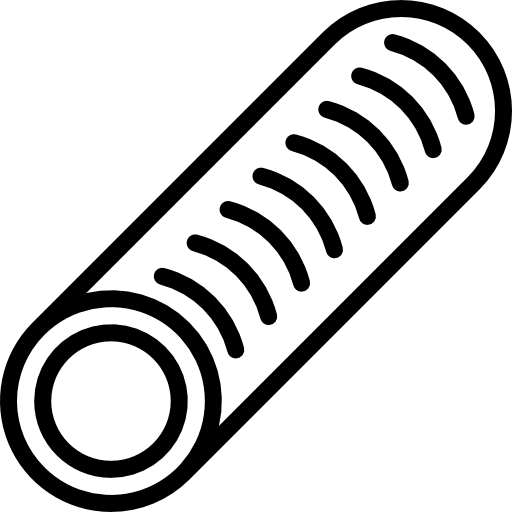 Pipes & Hoses
Pipes & Hoses Acoustic
Acoustic Accessories
Accessories


